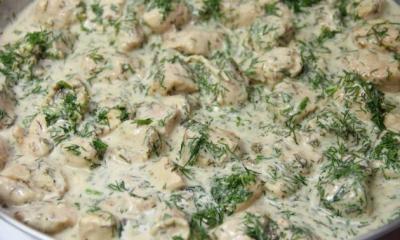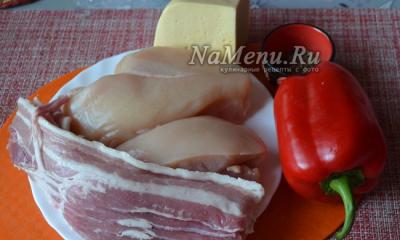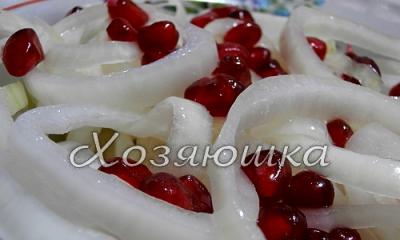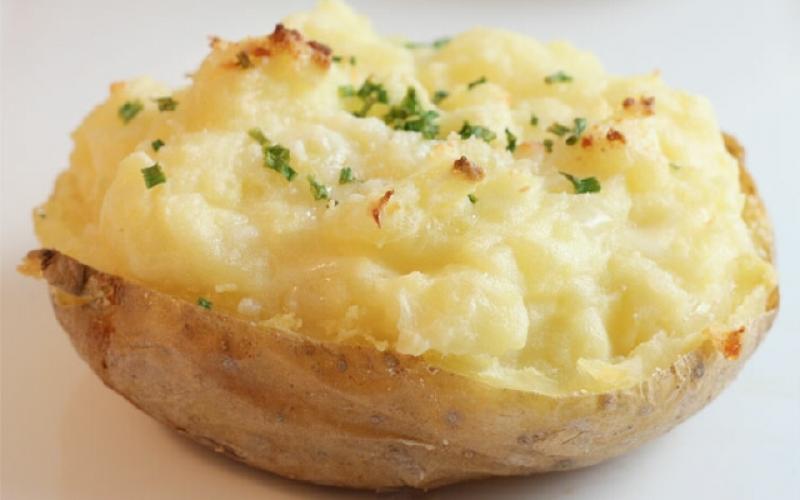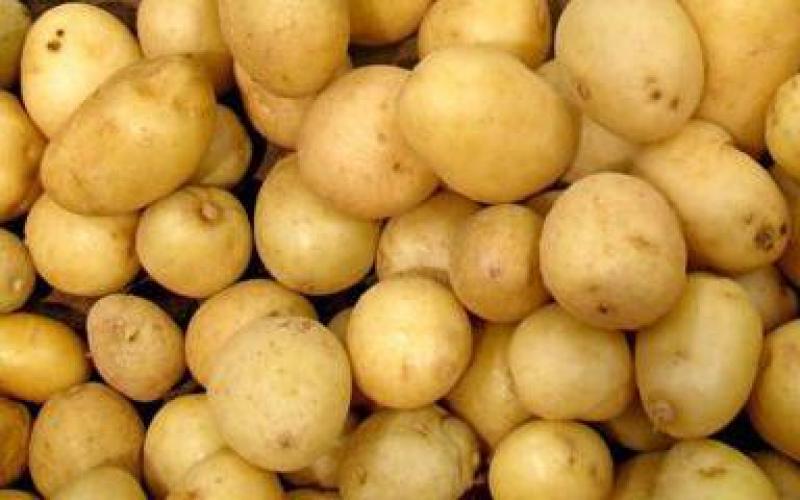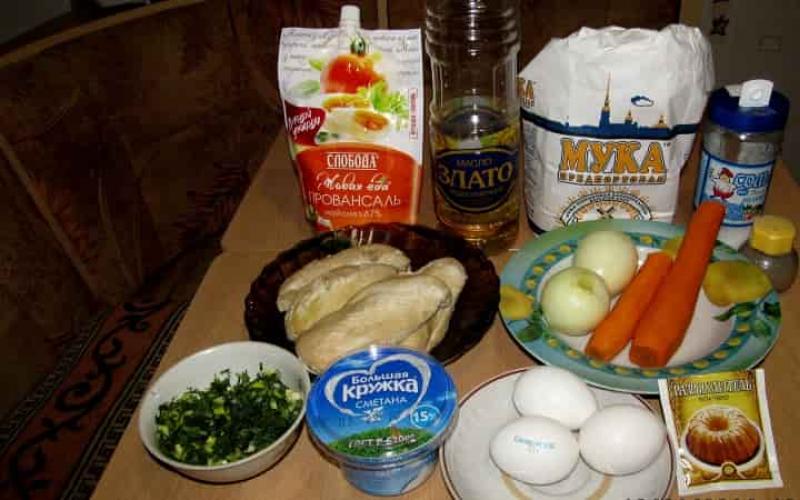Gross formula:
C4H6O6
CAS# 87-69-4 Categories:
Hydroxy acids
PubChem CID: 444305
Titles
English:L-(+)-Tartaric acidEnglish:(+)-L-Tartaric acid(+)-Tartaric acid(2R,3R)-2,3-dihydroxybutanedioic acid(IUPAC)L(+)-Tartaric acidL-(+ )-tartaric acidL-(R,R)-(+)-tartaric acidL-tartaric acidL-threaric acidNatural tartaric acidTartaric acid natural isomerdextrotartaric acid
Properties of tartaric acid
Tartaric acid is a muscle toxin that, at high doses, can cause paralysis and death. The lethal dose is 7.5 g per 1 kg of human weight. According to this figure, death for a person will occur if more than 500 g of tartaric acid is consumed at a time. In the food industry, the E334 additive is used in much smaller quantities, so it is classified as safe. Also in the food industry, the additive is used as an acidity regulator and antioxidant in the manufacture of various jams, jelly, confectionery. In addition, the food additive E334 is used in the production of all kinds of drinks and table water.
After careful study chemical composition nutritional supplement E334, scientists argue that this supplement is quite safe. Moreover, it benefits human health and the body as a whole. Tartaric acid is directly involved in the processes of digestion and metabolism that occur in the human body.
general information
Each food additive has certain qualities of the physico-chemical plan. E-334 is no exception. This product is a practically colorless powdery (crystalline) mass with a rather sour taste. This substance has no odor.
C4H6O6 - this is how E-334 looks like in the form of a chemical formula. The molecular formula is represented by such a scheme - HOOC-CH (OH) - CH (OH) - COOH. That is, from a chemical standpoint, E 334 is a dibasic hydroxy acid.
The additive is commercially produced from different kind raw materials. Most often, this is the waste that the wine industry gives. These include tartaric lime and tartar. Fresh berries, in this regard, are used quite rarely. Wine yeast (usually dry) can be used to produce E 334.
In the natural environment, tartaric acid is considered a fairly common substance and is a free component of the structures of various fruits. Moreover, it can be found in combination with other components, for example, calcium, magnesium, potassium.

Effect on the body
Harm
E-334 is on the list of safe products. And indeed, in small quantities, the substance is not dangerous. But a large dose of the supplement, namely 7.5 g per 1 kg of body weight, can lead to negative consequences, even death, as it turns into a harmful toxic (muscle toxin) product. Certain symptoms, such as vomiting, diarrhea, nausea, dizziness, may indicate an overdose. It has been estimated that 500 g of Tartaric acid ingested at one time can cause paralysis and death of a person.
Benefit
Tartaric acid plays an important role in the body. This component has a positive effect on blood vessels, expanding them, on the heart muscle (tones), prevents cell oxidation. Under the influence of tartaric acid, metabolic processes are accelerated, and firmness and, at the same time, elasticity of the skin improves.
It is believed that for children, from 5 mg to 12 mg of this substance daily is enough for the body to function normally. Adults need a little more: women - up to 15 mg, and men from 15 to 20 mg.
Requests for this element increase with stress, with an increase in radiation, with a decrease in the acidity of the stomach, which is the cause of intestinal dysfunction.
Usage
The E334 rating is quite high for manufacturers in various industries. The additive is especially popular in the food industry. It can be found in the composition of flour products: pasta, confectionery, bakery. Manufacturers of jellies and marmalades, canned food and ice cream use its antioxidant qualities. E 334 is one of the components of many wines, as well as beer and liqueurs. The additive is also used in soft drinks.

In cosmetology, they resort to E334 as a strong biostimulant. It is one of the components of products, for example, creams, lotions, intended for body and face care.
In pharmacology, the additive is in demand in the production of diuretic drugs that eliminate heartburn, laxatives, and effervescent tablets.
The industries that apply E - 334 also include the following:
- textile;
- electronic;
- non-ferrous metals;
- construction;
- electrical engineering;
- analytical chemistry.
The product's name
Food tartaric acid (GOST 21205-83) - the main name.
An international synonym is Tartaric acid for use in foodstuffs.
Other names:
- E 334 (E-334), designation in the European codification of additives;
- L(+)-tartaric acid;
- 2,3-dihydroxybutanedioic acid, chemical name;
- dioxysuccinic acid;
- tartaric acid;
- dihydroxibernsteinsaure or L(+)Weinsaure, German synonyms;
- acide L(+) tartrique, French.
Substance type
Food supplement E 334 is a representative of the group of antioxidants. Performs the technological role of an acidity regulator.
It is a strong synergist of other antioxidants, therefore it is often used in combination.
Obtained from natural ingredients. During fermentation and storage of wine, cream of tartar (cremortartar) is formed on the walls of containers. The by-product is the main raw material for the production of additive E 334.
Additional sources are: 
- dried wine sediments (formed during storage of must);
- refuse;
- remnants of wine in containers (collected when washing barrels).
Tartaric acid E 334 is obtained by precipitation of materials with calcium salts and their subsequent splitting with sulfuric acid.
Malic acid and esters of tartaric acid proper (tartrates) are allowed as impurities.
The food supplement is produced of the first and highest grade. The category depends on the feedstock and the degree of final purification.
Intervention in the production of chemical methods does not allow us to consider the antioxidant E 334 as a completely natural product.
Properties
| Indicator | Standard values |
| Color | white, yellowish shade allowed (only for grade 1) |
| Compound | tartaric acid, impurities (malic acid, tartrates); empirical formula C4H6O6 |
| Appearance | colorless crystals or powder |
| Smell | is absent |
| Solubility | good in water, alcohol, ethers; insoluble in oils and fats |
| The content of the main substance | 99% |
| Taste | sour |
| Density | 1.79 g/cm |
| Other | low hygroscopicity |
Package
Containers for food additive E 334 are:
- three- or four-layer paper bags, laminated;
- paper non-impregnated three-layer bags with an additional insert;
- bags made of natural fabrics: linen, jute, kenaf, not lower than grade 2 (a liner bag is required);
- plank boxes for food packaging, completely lined with parchment on the inside (gaps and gaps are not allowed).
Up to 40 kg of tartaric acid are packaged in bags made of natural fabrics, and no more than 30 kg in the rest of the container.
Application
Tartaric acid is approved for use in all countries.
Food additive E 334 is popular with food manufacturers due to its low hygroscopicity, safety of use and spicy sour-tart taste.
Tartaric acid can be found in: 
- jelly, marmalade (including those with low sugar content);
- bakery and pasta;
- confectionery flour products;
- canned fruits;
- chocolate and cocoa products (5 g/kg);
- fruit and berry ice cream;
- canned tomatoes.
The antioxidant is used to acidify wines, liqueurs, beer, without alcoholic beverages(including dry effervescent).
In the Codex Alimentarius, tartaric acid is allowed in 12 standards:
- jams, citrus marmalades and similar products (up to 3 g/kg);
- cocoa-based products (up to 5 g/kg);
- margarines according to the GMP standard;
- tomato-based concentrates (to ensure a pH above 4.3 units);
- canned vegetables and fruits.
In the growing popularity of molecular cuisine, tartaric acid is added to beetroot marmalade to give it a blackcurrant flavor.
The antioxidant properties of tartaric acid are used by the cosmetic industry. 
Food supplement E 334 is a component of face and body care products. It is a very strong biostimulant that improves skin firmness and elasticity.
Included in whitening, moisturizing, toning and anti-aging creams and lotions. It is the main ingredient in peeling systems.
Additive E 334 has found application in pharmaceuticals and medicine.
Low hygroscopicity allows the use of tartaric acid in the production of "effervescent" tablets that eliminate heartburn, heaviness in the stomach, hangover.
It is part of many laxatives and diuretics, as it has a beneficial effect on metabolic processes.
Alternative application:
- electrical engineering, electronic production (manufacturing of microphones, computers);
- construction (retarder setting of gypsum mixtures);
- production of non-ferrous metals;
- textile industry (dyeing of fabrics);
- analytical chemistry (detection of aldehydes, separation of racemates into isomers).
Benefit and harm

Tartaric acid does not cause allergic reactions and other undesirable effects. Additive E 334 improves digestion, increases vitality.
The allowable daily intake of tartaric acid is 30 mg per kilogram of body weight.
A dose of 7.5 g/kg body weight (approximately 500 g) taken at one time causes muscle paralysis and death.
For comparison: most of all tartaric acid in soft drinks - up to 1.7 g / l. This is hundreds of times less than the toxic dose.
Tartaric acid is poorly broken down in the body. Mostly remains in the intestines in the form of calcium tartrate. A small amount is excreted naturally.

Calcium propionate (E282) is considered a non-toxic preservative.
The main source of lycopene is red tomatoes and tomato paste. this food coloring read here.
In fast food establishments, dirty dishes are at the top of the list of important issues. The dirty dishes conveyor will help you quickly cope with dirty plates and forks. How to choose the right one and which brands to give preference to, read here.
Sources
- http://charchem.org/en/subst-ref?id=1293
- https://vesvnorme.net/zdorovoe-pitanie/vinnaja-kislota.html
- https://nebolet.com/konservanty/e334.html
- http://vkusologia.ru/dobavki/antioxidanty/e334.html
Tartaric acid (Tartaric acid, dioxysuccinic acid, E334) is a dibasic hydroxy acid.
Chemical formula HOOC-CH(OH)-CH(OH)-COOH. Three stereoisomeric forms are known.
Tartaric acid is a common natural compound. It is found in significant amounts in the acidic juice of many fruits, such as grape juice.
It is used in the food industry (food additive E334), in medicine, in analytical chemistry.
Salts of tartaric acid (tartrates) are used in medicine, in dyeing fabrics, etc.
Tartaric acid (food additive E334) - colorless crystals of white powder, odorless, but with a very sour taste. From the point of view of chemistry, the E334 additive is a dibasic salt of potassium acid with the molecular formula? HOOC-CH-CH-COOH.
Tartaric acid is widely distributed in nature: it occurs freely in many fruits, sometimes in combination with magnesium, calcium or potassium. It exists in three stereoisomeric forms.
Tartaric acid (additive E334) is produced from various raw materials. This can be waste from the wine industry, such as cream of tartar or tartaric lime. Dried wine yeast or, extremely rarely, fresh fruit is also used.
Tartaric acid is a muscle toxin that causes paralysis and death in high doses. The lethal dose for humans is 7.5 g/kg of the human body. Given this figure, it can be calculated that in order to “kill” a person, it is necessary to consume more than 500 g of tartaric acid at a time. Because in the food industry, the additive E334 is used in much lower doses; it is classified as safe.
In the food industry, tartaric acid is used as an acidity regulator and antioxidant in the production of preserves, jams, jellies and various confectionery products. Additive E334 is added in the manufacture of beverages and table water, is widely used in the field of winemaking. Tartaric acid is one of the components of the tart taste in wine.
Other uses for tartaric acid:
- in the pharmaceutical industry, for the production of soluble drugs, effervescent tablets and some other drugs;
- in the cosmetology industry, for the production of creams and lotions for the face and body;
- in the textile industry, for dyeing fabrics;
- in analytical chemistry, for the detection of sugars and aldehydes.
Additive E334 is included in the list of permitted food additives in Russia and Ukraine.
After carefully studying the chemical composition and properties of the food antioxidant E334 Tartaric acid, scientists came to the conclusion that the food supplement is not only safe, but brings clear and tangible benefits to human health. It is noteworthy that the benefits of food antioxidant E334 Tartaric acid extend to the entire human body as a whole. However, tartaric acid is of paramount importance for the digestive and metabolic processes occurring in the human body.
Food antioxidant E334 is approved for use in the production process of a food group of goods in most countries of the world, including the European Union, Russian Federation and neighboring countries. According to its chemical properties, food antioxidant E334 Tartaric acid belongs to antioxidant and antioxidant compounds that help to significantly increase the shelf life, shelf life, and, consequently, the sale of finished food products.
Over time, natural oxidative processes begin to occur in food products, antioxidants, including the food antioxidant E334 Tartaric acid, help slow down natural changes that lead to spoilage of finished food products. The chemically active compound tartaric acid, which is part of the food antioxidant E334 Tartaric acid, is a dibasic carboxylic or hydroxy acid.
It is noteworthy that this type of chemical compounds differs in its characteristics and composition. For example, tartaric acid or antioxidant E334 simultaneously contains a carboxyl and hydroxyl group in its chemical composition. For this reason, the antioxidant E334 exhibits the properties of both an acid and an alcohol. Food Antioxidant E334 Tartaric acid belongs to the group of natural antioxidants that can be found in most acidic fruits, such as grapes.
Antioxidant E334 is often used in the food industry as an acidity or pH regulator. The appearance of the antioxidant E334 is similar to the state of aggregation of most antioxidants and antioxidants used in the food industry. A colorless crystalline powder, with an astringent and pronounced sour taste, this is what E334 food antioxidant is.
Benefits of Food Antioxidant E334 Tartaric Acid
It should be noted that scientists and physicians have long known the benefits of the food antioxidant E334 Tartaric acid and the role of the chemical compound for the normal functioning of all vital systems of the human body. Food antioxidant E334 Tartaric acid is directly involved in the metabolism or metabolic and digestive processes that occur every second in our body.
At present, doctors have not established any restrictive norms or limits for the consumption of food products containing the antioxidant E334. As a rule, the food antioxidant E334 is used for the manufacture of confectionery, jams, jams, fruit juices or purees, jellies, marmalades, sweets, usually lollipops, as well as alcoholic beverages. In addition to the food industry, tartaric acid has found wide application in the pharmaceutical, cosmetic and chemical industries.
Tartaric acids are compounds that are often found in flora. It can be both free isomers and the main source of this substance is ripe grape fruits. Tartar stones, in other words, potassium sparingly soluble salts, are formed during the fermentation of a drink from berries. This dietary supplement is labeled E334. It is obtained most often from secondary products of wine processing.
Tartaric acid: formula and varieties
Tartaric acid is a hygroscopic crystal that is odorless and colorless. However, the substance has a pronounced sour taste. All varieties of tartaric acid are highly soluble in water, as well as in ethyl alcohol. The compounds are more resistant to aliphatic hydrocarbons, benzene and ether. The chemical formula of this compound is: C 4 H 6 O 6 .
Tartaric acid occurs as 4 isomers. This is due to the symmetrical and equilibrium arrangement of acid carboxyls, hydrogen ions and hydroxyl residues. It:
- D-tartaric, otherwise - tartaric acid.
- L- tartaric acid.
- Anti-tartaric, in other words - meso-tartaric acid.
- Tartaric acid, which is a mixture of tartaric acids L- and D-.
Physical Properties
Tartaric acids are identical in chemical properties. However, they are completely different and there are significant differences in physical parameters. For example, tartaric acids D- and L- begin to melt at a temperature of 140°C, grape acid - from 240 to 246°C, mesotartaric acid - 140°C.
With regard to solubility, the first two compounds are perfectly soluble in water, while the remaining two are resistant to moisture.

Salts of tartaric acid
Tartaric acid can only form two sour and medium. Compounds of the latter type can be completely dissolved in water. However, when immersed in caustic alkali, they form Rochelle crystals. Acidic monosubstituted acids are poorly soluble in liquids. This applies not only to water, but also to spirits and wine drinks. They gradually settle on the walls of blood vessels. After that, the contents are carefully removed and used to obtain organic acid.
As for tartar, it is found not only in the juice of grape fruits, but also in nectars with pulp, and in pastes made from fruits.
Daily rate
Tartaric acids are simply necessary for the body with an increased radiation background, dysfunction of the digestive system, constant stress, as well as with low stomach acidity.
These compounds are found in acidic fruits. The maximum concentration of tartaric acid is concentrated in rhubarb, papaya, lingonberries, quince, pomegranates, cherries, gooseberries, black currants, limes, oranges, avocados, tangerines, cherries, apples and grapes.
With proper and balanced nutrition, the daily need for such compounds is fully covered. For the normal functioning of the body, men need from 15 to 20 milligrams of tartaric acid, women - from 13 to 15 milligrams, and children - from 5 to 12 milligrams.

What is useful tartaric acid
The properties of tartaric acid are difficult to overestimate. This compound has biological significance. Wine acid:
- Tones the heart muscle.
- Expands blood vessels.
- Stimulates collagen synthesis.
- Increases firmness and elasticity of the skin.
- Protects cells from oxidation.
- Increases the speed of all metabolic processes.
- Reacts with radionuclides, and also accelerates their excretion from the body.
When using this supplement, it is worth considering that exceeding the daily allowance is fraught with consequences. Signs of overdose may occur, which include paralysis, dizziness, diarrhea and vomiting. In some cases, excessive use of the reagent can be fatal. Death occurs in situations where the dose of tartaric acid exceeds 7.5 grams per 1 kilogram of body weight.
In order not to harm your body, increase daily allowance substances alone are not recommended. This can only be done by the attending physician. Especially if the patient is predisposed to herpes, has sensitive skin, or the mechanism for the absorption of certain acids is impaired.

Application in the food industry
Tartaric acid, the formula of which is indicated above, allows you to slow down the processes of decay and decay of products. Due to this property, the compound has been widely used in the food industry. Tartaric acid prevents premature spoilage of flour, as well as canned food. Very often, the compound is used as an antioxidant reagent or acidity regulator.
Tartaric acid is present in the composition of alcoholic beverages, table water, bakery and confectionery products, as well as canned foods. Obtaining this component is a simple process. To do this, use the waste that is generated as a result of obtaining a wine drink.
It should be noted that the substrate is used to preserve the whiteness and plasticity of chocolate icing, fixing and loosening the dough. In addition, the E334 additive makes it possible to soften the taste of alcoholic wine drinks, making them more tart and pleasant.

The use of tartaric acid in other areas
Tartaric acid is widely used not only in the food industry, but also in pharmaceuticals. For medical purposes, the compound is used as an auxiliary component. It is used in the manufacture of soluble drugs, some laxatives medicines as well as effervescent tablets.
Tartaric acid is also used in cosmetology. This compound is found in many professional shampoos, lotions, creams and peels designed for hair and skin care.
In fact, tartaric acid is used in many areas. For example, the compound is used in the textile industry to fix the color as a result of dyeing fabrics. In construction, the additive is used as a reagent. It is added to gypsum and cement mixtures. Due to this, the mass solidifies more slowly.
Rochelle salt is used in the manufacturing process of computers, loudspeakers and microphones due to its piezoelectric properties.
Tartaric (tartaric, dioxysuccinic or tartanic) acid is a common chemical reagent in the form of a natural compound. In appearance it is a viscous white or colorless odorless crystalline powder, but with a pronounced sour taste, like citric acid which you can buy on our website. The substance is highly soluble in water and alcohol, practically insoluble in vegetable oils and fats. This acid is widely distributed in its natural form. In nature, it is found in many fruits and berries, for example: in grapes and mountain ash, both in a free state and in combination with calcium, potassium and magnesium.
This substance was known in ancient times as tartar (acidic rock salt). This chemical was first obtained as a by-product of winemaking and was used to prevent the growth of bacteria in wine. In the free state, the chemical reagent was obtained by the famous chemist Karl Scheele (Sweden, 1769).
There are several ways to obtain tartaric acid. It is made from various raw materials: wine-making waste (tartaric lime or cream of tartar), dry wine yeast, very rarely from fruits using special laboratory equipment and instruments, as well as in the process of exposure to special chemical reagents - mineral acids (sulfuric acid) on cream of tartar.
Application
The unique formula of the composition of the acid allowed it to find its application in such industries as:  - textile - dye for fabrics and color fixer;
- textile - dye for fabrics and color fixer;
- analytical chemistry - to detect aldehydes and sugar;
- cosmetology - is part of many lotions, mousses, masks, shampoos, balms and creams as a whitening, moisturizing and exfoliating component;
- pharmaceuticals - in the production of effervescent tablets, soluble drugs, as well as diuretics and laxatives, drugs for stomach heaviness, heartburn and hangover indisposition;
- the medicine;
- electronics;
- construction - slows down the setting and drying of gypsum and cement.
Food supplement
 In the food industry, tartaric acid is registered as an additive E334 - an acidity or pH regulator and an antioxidant in the manufacture of confectionery and bakery products: sweets, marmalade, jams, jellies, popsicles, canned foods, juices, soft drinks, table waters and wine products. It gives a tart taste to wine. It is added to alcoholic beverages to soften the taste of alcohol and give a pleasant aroma. The antioxidant properties of the reagent allow you to extend the shelf life of food products - it helps to slow down oxidative processes. Tartaric acid also maintains a conditioned alkaline pH in foods: the more acid, the lower the pH. Food antioxidant is allowed in many countries of the world, including Russia and Ukraine.
In the food industry, tartaric acid is registered as an additive E334 - an acidity or pH regulator and an antioxidant in the manufacture of confectionery and bakery products: sweets, marmalade, jams, jellies, popsicles, canned foods, juices, soft drinks, table waters and wine products. It gives a tart taste to wine. It is added to alcoholic beverages to soften the taste of alcohol and give a pleasant aroma. The antioxidant properties of the reagent allow you to extend the shelf life of food products - it helps to slow down oxidative processes. Tartaric acid also maintains a conditioned alkaline pH in foods: the more acid, the lower the pH. Food antioxidant is allowed in many countries of the world, including Russia and Ukraine.
The effect of tartaric acid on the body
After numerous studies using special laboratory glassware and laboratory equipment, scientists have proven the safety and significant benefits for the body of this chemical reagent. The main importance of such an acid for the body is to improve metabolic processes, metabolism and digestion, which take place every second in our body. Also, tartaric acid is indispensable for the normal functioning of the vital systems of the human body.
Tartaric acid is only partially broken down in the body: a smaller part is excreted by the kidneys, a large part remains in the intestines.
Despite the fact that this acid is quite common, do not forget that its use in in large numbers can cause paralysis, even death, so it should be consumed only in reasonable quantities. The lethal dose for humans is 7.5 g/kg of body weight.
Quality chemicals and laboratory equipment in Moscow
To obtain an accurate analysis, experiment or study, it is important that all items used, from filter paper and laboratory glass to electronic laboratory scales, be certified. It is such products in a wide range that are presented in PrimeChemicalsGroup, a store of chemical reagents Moscow retail and wholesale trade. Here you will find everything you need to equip a small pharmacy or professional research and production laboratory with high quality products that meet all GOST standards at an affordable cost.
Tartaric acid is a very common natural compound. Significant amounts of it can be found in the juice of many fruits, in particular, in grape juice. As a food additive, it has the designation E334. It is used in industries such as food, cosmetics, textiles, as well as in medicine and analytical chemistry.
This food supplement looks like a white crystalline powder, which is odorless, but has a tart sour taste. It is soluble in alcohol, acetone, ether and water. In fats, as well as vegetable oils, this acid does not dissolve.
The production of tartaric acid was an important step in the development of chemistry. The first experiments to obtain this substance were carried out by an alchemist named Jabir ibn Hayyan. The modern production method was developed by the Swedish chemist Carl Wilhelm Scheele in the 18th century. On the this stage this acid is obtained from different raw materials. Often used for this waste from the wine industry.
The main sources of tartaric acid are:
Dried wine yeast, which is obtained during the production of wine;
Tartar, formed on the walls of the vessel during the fermentation of wine;
Tartaric lime, which is formed during the processing of yeast;
Cretaceous sediments that are formed during the process of reducing the acidity of wine materials.
Properties of tartaric acid
Tartaric acid is a muscle toxin that, at high doses, can cause paralysis and death. The lethal dose is 7.5 g per 1 kg of human weight. According to this figure, death for a person will occur if more than 500 g of tartaric acid is consumed at a time. In the food industry, the E334 additive is used in much smaller quantities, so it is classified as safe. Also in the food industry, the additive is used as an acidity regulator and an antioxidant in the manufacture of various jams, jellies, and confectionery. In addition, the food additive E334 is used in the production of all kinds of drinks and table water.
After a thorough study of the chemical composition of the food additive E334, scientists claim that this additive is quite safe. Moreover, it benefits human health and the body as a whole. Tartaric acid is directly involved in the processes of digestion and metabolism that occur in the human body.
The use of tartaric acid
Food additive E334 is approved for use in the production of a group of food products in most countries of the world. Tartaric acid is classified as an antioxidant and antioxidant compound, thanks to which it is possible to increase the shelf life, and, consequently, the shelf life various products nutrition. One of the properties of E334 is that it slows down natural processes that inevitably lead to spoilage of already prepared food products. Also food supplement E334 is often used in the food industry as an acidity regulator.
The use of tartaric acid is also common in other industries. For example, the pharmaceutical industry uses it to make soluble drugs. In the cosmetic industry, it is used to make creams, lotions for the face and body, and other similar products. Tartaric acid is a strong antioxidant and biostimulant. Being in the composition of any cosmetic product, it has an exfoliating and moisturizing effect.
Popular Articles Read more articles
 02.12.2013
02.12.2013
We all walk a lot during the day. Even if we have a sedentary lifestyle, we still walk - because we don't have...
610594 65 Read more
 10.10.2013
10.10.2013
Fifty years for the fair sex is a kind of milestone, after stepping over which every second ...
452003 117 Read more
 02.12.2013
02.12.2013
In our time, running no longer causes a lot of rave reviews, as it was thirty years ago. Then society would...
357070 41 Read more


